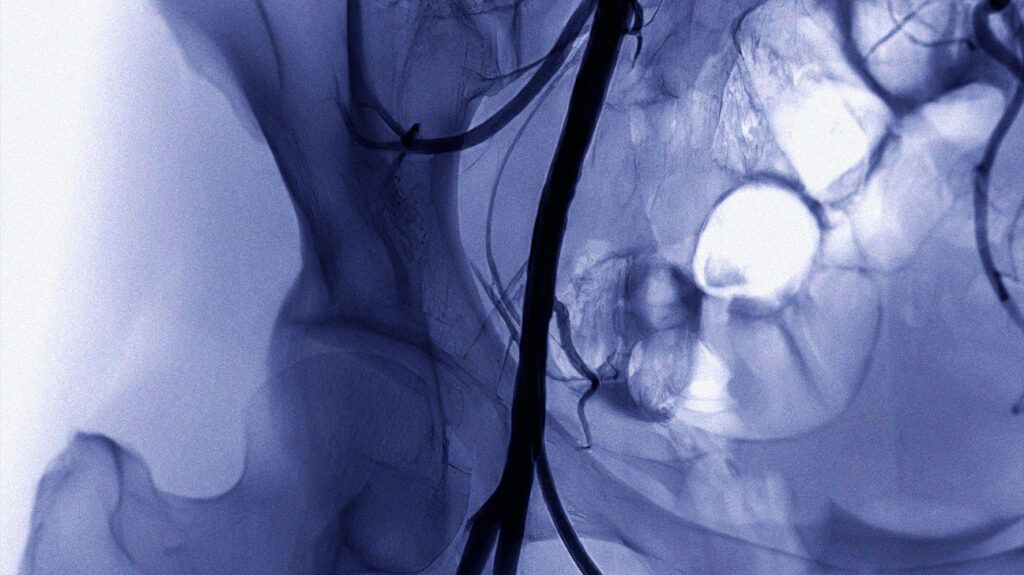A femoral endarterectomy is a surgical procedure to remove fatty deposits from the femoral artery in the groin. This artery supplies the lower body with oxygen-rich blood.
The femoral artery is a large blood vessel in the groin. It supplies oxygen-rich blood to the lower limbs and parts of the abdomen.
Fatty deposits can build up in the femoral artery due to certain factors. These include tobacco smoking, high cholesterol, and high blood pressure.
The medical term for these fatty deposits is “plaque,” which can lead to peripheral arterial disease (PAD). PAD occurs when plaque builds up in an artery, causing blockage or narrowing. It typically occurs in arteries not connected to the heart or brain.
PAD can occur in the femoral artery, reducing blood flow to the legs. This can cause pain, weakness, and cold sensations in the legs and feet.
A femoral endarterectomy is a surgical procedure. This procedure aims to remove plaque buildup in the femoral artery due to PAD. The procedure works to restore circulation in the affected area.
This article discusses what a femoral endarterectomy involves, the conditions it can treat, the benefits and risks, and more.

A femoral endarterectomy is the
Before a femoral endarterectomy, a surgeon may recommend a person receive a general anesthetic. This means a person will be asleep during the procedure. Alternatively, a surgeon may recommend an epidural anesthetic, which means a person will be numb from the waist down.
To begin a femoral endarterectomy, a surgeon will make an incision in the groin to access the femoral artery.
The surgeon will then cut into the femoral artery and remove the plaque by peeling it away from the artery wall.
The surgeon will then close the femoral artery by stitching over a synthetic patch. The synthetic patch can help stop the artery from further narrowing.
The surgeon will then close the wound with stitches or metal staples.
Learn more about endarterectomy surgery.
A femoral endarterectomy can treat atherosclerosis, or plaque buildup, in the common femoral artery (CFA). Doctors may refer to this condition as CFA stenosis (narrowing of the femoral artery) or CFA disease.
A femoral endarterectomy can help:
- improve circulation in the legs
- lower pain and inflammation
- keep the femoral artery clear
To prepare for a femoral endarterectomy, a person may require a review of any medications they take. This is to determine whether they need to stop taking any medications before the procedure.
If a person takes antiplatelet medications to thin the blood, or diabetes medication, a doctor may recommend stopping these medications for a while before the procedure.
For the 6 hours leading up to the procedure, a person may need to fast. This means not eating or drinking any foods or liquids.
It is important for a person to follow any instructions their doctor gives them before the procedure. A person can also ask questions to learn more about what to expect during and after the femoral endarterectomy.
Following a femoral endarterectomy, a person may have to stay in the hospital for about 2 days, though this may vary for each individual. A person’s doctor can advise on how long they can expect to stay in the hospital.
A doctor will closely monitor a person following the procedure. A physical therapist may assess a person for any mobility issues.
A person may receive fluids through an intravenous drip until they feel ready to eat and drink.
Once a person is at home, it may take several weeks or months before a person feels able to fully resume their usual activities.
The risks of a femoral endarterectomy may vary from person to person. This depends on any health conditions a person had before the procedure.
Some possible complications of a femoral endarterectomy can include:
- bleeding underneath the skin
- nerve damage, which may lead to numbness of the skin
- swelling of the legs
- loss of blood supply to the legs, which may lead to amputation
- wound infections, which
may occur at the wound site.
Here are some frequently asked questions about femoral endarterectomy.
Is femoral endarterectomy a major surgery?
Medical professionals classify femoral endarterectomy as a major surgery.
What is the recovery time for a femoral endarterectomy?
Following a femoral endarterectomy, a person might need to stay in the hospital for roughly 2 days. However, it may take several weeks or months for a person to fully recover. A person may be able to return to work after about 6 weeks.
What is the life expectancy after a femoral endarterectomy?
A
However, it is important to note that the outlook may vary for each individual. A person’s doctor can provide them with more accurate information based on their individual circumstances.
A femoral endarterectomy is a surgical procedure to remove plaque buildup in the femoral artery.
A person may need to fast and stop taking certain medications before the procedure. Afterward, they may need to stay in the hospital for several days. Recovery can take a number of weeks.
A person’s doctor can advise on whether they are a suitable candidate for femoral endarterectomy and answer any questions about the procedure.
